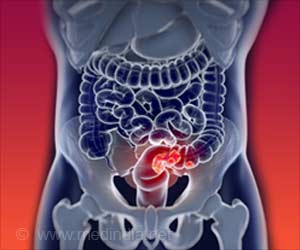A nanoscale drug that has been built to carry a variety of weapons, sneak into cancer cells and break them down from the inside has now been fitted with a new protein.

Researchers from the Samuel Oschin Comprehensive Cancer Institute at Cedars-Sinai, the Division of Surgical Oncology at UCLA, and the Molecular Biology Institute at UCLA also participated in the study.
Unlike other drugs that target cancer cells from the outside, often injuring normal cells as a side effect, this therapy consists of multiple drugs chemically bonded to a "nanoplatform" that functions as a transport vehicle.
HER2-positive cancers – making up 25 to 30 percent of breast and ovarian cancers – tend to be more aggressive and less responsive to treatment than others because the overactive HER2 gene makes excessive amounts of a protein that promotes cancer growth. One commonly used drug, Herceptin (trastuzumab), often is effective for a while, but many tumors become resistant within the first year of treatment and the drug can injure normal organs it contacts.
But Herceptin is an antibody to the HER2 gene – it naturally seeks out this protein – so the research team used key parts of Herceptin to guide the nanodrug into HER2-positive cancer cells.
"We genetically prepared a new 'fusion gene' that consists of an immune-stimulating protein, interleukin-2, and a gene of Herceptin," said Julia Y. Ljubimova, MD, PhD, professor of neurosurgery and biomedical sciences and director of the Nanomedicine Research Center. "IL-2 activates a variety of immune cells but is not stable in blood plasma and does not home specifically to tumor cells. By attaching the new fusion antibody to the nanoplatform, we were able to deliver Herceptin directly to HER2-positive cancer cells, at the same time transporting IL-2 to the tumor site to stimulate the immune system. Attaching IL-2 to the platform helped stabilize the protein and allowed us to double the dosage that could be delivered to the tumor."
The researchers also attached other components, such as molecules to block a protein (laminin-411) that cancer cells need to make new blood vessels for growth.
"We believe this is the first time a drug has been designed for nano-immunology anti-cancer treatment," Ljubimova said.
Bioconjugates are drugs that contain chemical "modules" attached (conjugated) to a delivery vehicle by strong chemical bonds. The nanoconjugate exists as a single chemical unit, and the tight bonds prevent the components from getting damaged or separated in tissues or blood plasma during transit. With inventive drug engineering, the anti-tumor components activate inside tumor cells.
"More study is needed to confirm our findings, improve the effectiveness of this approach and shed light on the anti-cancer mechanisms at work, but it appears that the nanobioconjugate may represent a new generation of cancer therapeutics in which we launch a multipronged attack that directly kills cancer cells, blocks the growth of cancer-supporting blood vessels and stimulates a powerful antitumor immune response," Ljubimova said, adding that this and previous animal studies have found the nanodrug to be a safe and efficient delivery platform.
Nano researchers manipulate substances and materials at the atomic level, generally working with substances smaller than 100 nanometers. Cedars-Sinai's nanoconjugate is estimated to be about 27 nanometers wide. A human hair is 80,000 to 100,000 nanometers wide.
Source-Eurekalert
 MEDINDIA
MEDINDIA



 Email
Email










